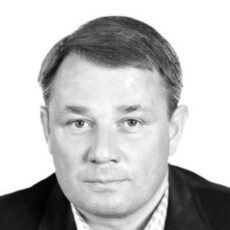
Biomethane and EU Post-Pandemic Goals
Last week the EU proposed a COVID-19 recovery plan, which emphasizes a clean energy transition. Two authors explore biomethane as a potential solution.
On May 27, the European Commission released a communication to other EU institutions detailing the strategy for EU economic recovery post-COVID 19 (COM(2020) 456). The document includes clean energy and sustainability as important parts of the recovery effort. Investment in renewable and energy storage technologies, carbon capture and storage (CCS), and sustainable energy infrastructure, as well as sustainable transportation systems and development of clean hydrogen are included in the commitment. The strategy also stresses the need to reduce energy dependency and strengthen security of supply while supporting the EU’s goal to establish a circular economy.
As such this communication confirms and underscores EU’s existing policies and renewable energy targets, which would require that many member states radically reduce their share of carbon in electricity and heat generation and/or the transportation sector. But this is not an easy task and it has already been met with disagreement particularly from countries where access to renewable resources such as wind and/or sun is not readily available and where economic, societal, political and geopolitical considerations foster reliance of fossil fuels. Moreover, if renewable energy developments lead to higher prices (even if only short term), the burden could be unaffordable given the expected level of hardship that the COVID-19 pandemic will have on Europe economies.
Those goals as well as concerns could be, at least partially, addressed by an increased focus on biomethane production, as supplemental to other zero-carbon technologies while compatible with natural gas use and infrastructure.
Biomethane is a renewable resource refined from biogas which, in turn, is produced through a process of anaerobic fermentation of various biodegradable biomass, waste, and municipal raw materials. This biomethane contains greater than 95% methane by volume.
CO2 emissions associated with combustion of biomethane are similar to those that come from the combustion of natural gas—approximately 350 kg/MWh—since the composition of both fuels is virtually the same. But biomethane can be carbon neutral if several conditions are met. In the EU, biomethane is considered a clean, renewable fuel since methane emissions from agricultural, food, and municipal waste are more dangerous for the climate in the short-term (although methane stays in the atmosphere for much less time than CO2, it is a much more potent greenhouse gas).
Given wide, if not universal availability of waste as a feedstock to produce biomethane, the latter can become widely available as long as investment in infrastructure and production is made. As such, biomethane can support EU’s renewable and clean energy targets in all its member states (so-called “clean energy for all Europeans package”; “2030 climate and energy framework” and “2050 long-term strategy”) unlike other renewable energy sources such as hydro, sun, or wind that are location specific. In addition, given its reliance on waste treatment and recycling, production of biomethane also fosters development of a circular economy. Biomethane can also become a feedstock to produce clean hydrogen.
In general, biomethane is also a highly diverse fuel when it comes to its applications. It can be used widely in heating, cooling, and electricity generation but can also directly power vehicles in it either liquefied (LNG) or compressed (CNG) form. CNG and LNG-powered public transportation already exists in many European cities, such as Warsaw, Dublin, or Barcelona, to name a few. Since biomethane is chemically similar to natural gas, a switch or supplemental use would be seamless. Localized biomethane production could even expand the use of LNG and CNG in transportation to include smaller cities and private vehicles since contributing to the EU’s goal of decarbonizing the transportation industry.
Natural gas typically travels long distances to centers of demand and often generally requires centralized and expansive transmission network. But small-scale LNG infrastructure projects are gaining momentum giving impetus to a distributed energy system, one of the elements of the EU’s decarbonization agenda. Hence, localized production makes biomethane also highly compatible with this goal. The fuel can be funneled into a central transmission network. But since it is produced locally, it can also be dispatched to consumers via local or communal gas networks as well as LNG/CNG trucks, as long as infrastructure needed for liquefaction/compression and degasification is in place.
As a result, if biomethane investment is part of the plan to decarbonize EU’s economy, then any natural gas infrastructure becomes much less controversial in the view of the EU decarbonization goals as it can generally also serve the needs of biomethane transmission in the future. This helps short- (coal-to-gas switching) and long-term (carbon neutrality) decarbonization goals while also supporting countries’ energy security. In this sense, focus on biomethane can also have broader, institutional impact. In addition to energy security, by leveling the playing field between EU member states (renewable energy targets) and by transforming the way one looks at natural gas infrastructure buildup, biomethane can become an important element of fostering agreement on common energy goals that have been often in dispute. In doing so, it not only makes those goals more attainable but also furthers European unity and commitment to EU’s institutional goals.
This study is partially a result of Eryk Kosinski’s work leading the research project “Regulation of the Energy Sector in the European Union and Ukraine: The Comparison of Purposes and Legal Means of Regulation of the Energy Sector,” funded by the National Science Centre, Poland (No. 2016/21/B/HS5/00054).
Anna Mikulska
Senior FellowAnna Mikulska is an expert on European energy markets and energy policy. She is a senior fellow at the Kleinman Center and a fellow in energy studies at Rice University’s Baker Institute for Public Policy.
Eryk Kosinski
Professor, Adam Mickiewicz UniversityEryk Kosinski is a professor at the Faculty of Law and Adminstration of the Adam Mickiewicz University in Poznan, Poland and at the International Graduate School of Management, Peter the Great at St. Petersburg Polytechnic University in St. Petersburg, Russia.


